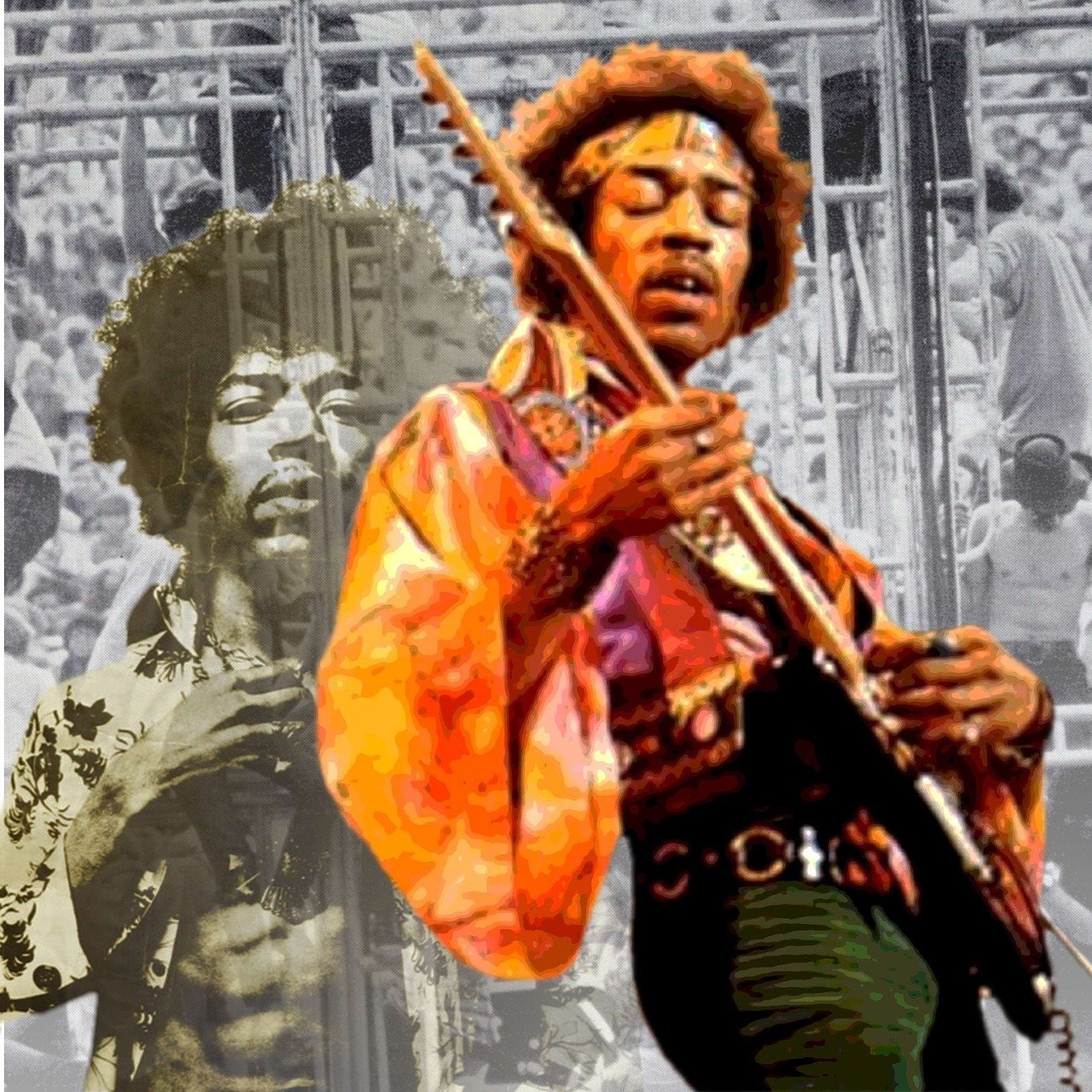
If you’ve been lucky enough to see the Rolling Stones on their new “Hackney Diamonds” tour, odds are you’ve been treated to an incredible multi-generational pop culture experience. Mick Jagger turns 81 years-old on Friday, and yet his singing, dancing, and stagecraft are incredible, not just for a person of his age but for any performer.
On the political scene, we’ve been dealing with a new designation this year – “Double Haters.” These are people who were totally uninspired by the Trump vs. Biden matchup, in no small part because they are both old. And yet, Jagger, Richards, Wood, and company are revered because of their ability to perform magnificently despite their advancing age.
 Cue Jimi Hendrix. While the Stones recently celebrated their amazing 60th anniversary at the top of the rock ‘n roll heap, James Marshall Hendrix’s career seemingly came and went in the blink of an eye. While remembered for his performances at legendary events like Woodstock and Monterey, Jimi Hendrix was gone by 1970, a member in good standing of the famous “27 Club,” the young age when many rockers sadly departed the stage…and life.
Cue Jimi Hendrix. While the Stones recently celebrated their amazing 60th anniversary at the top of the rock ‘n roll heap, James Marshall Hendrix’s career seemingly came and went in the blink of an eye. While remembered for his performances at legendary events like Woodstock and Monterey, Jimi Hendrix was gone by 1970, a member in good standing of the famous “27 Club,” the young age when many rockers sadly departed the stage…and life.
But in his relatively short time as a rock ‘n roll icon, Hendrix’s instincts were impeccable. His band name alone – “The Jimi Hendrix Experience” (italics mine) – tells you something about his entertainment chops. It was never about a collection of songs or even playing his guitar with his teeth or behind his head or even setting it on fire – it was about the experience. The Stones, of course, have always gotten it, too. It’s the show, the spectacle – about being there in person, feeling the moment, witnessing something special.
It’s why, in no small part, we’ve witnessed the COVID “slapback.” After a couple years of isolation and social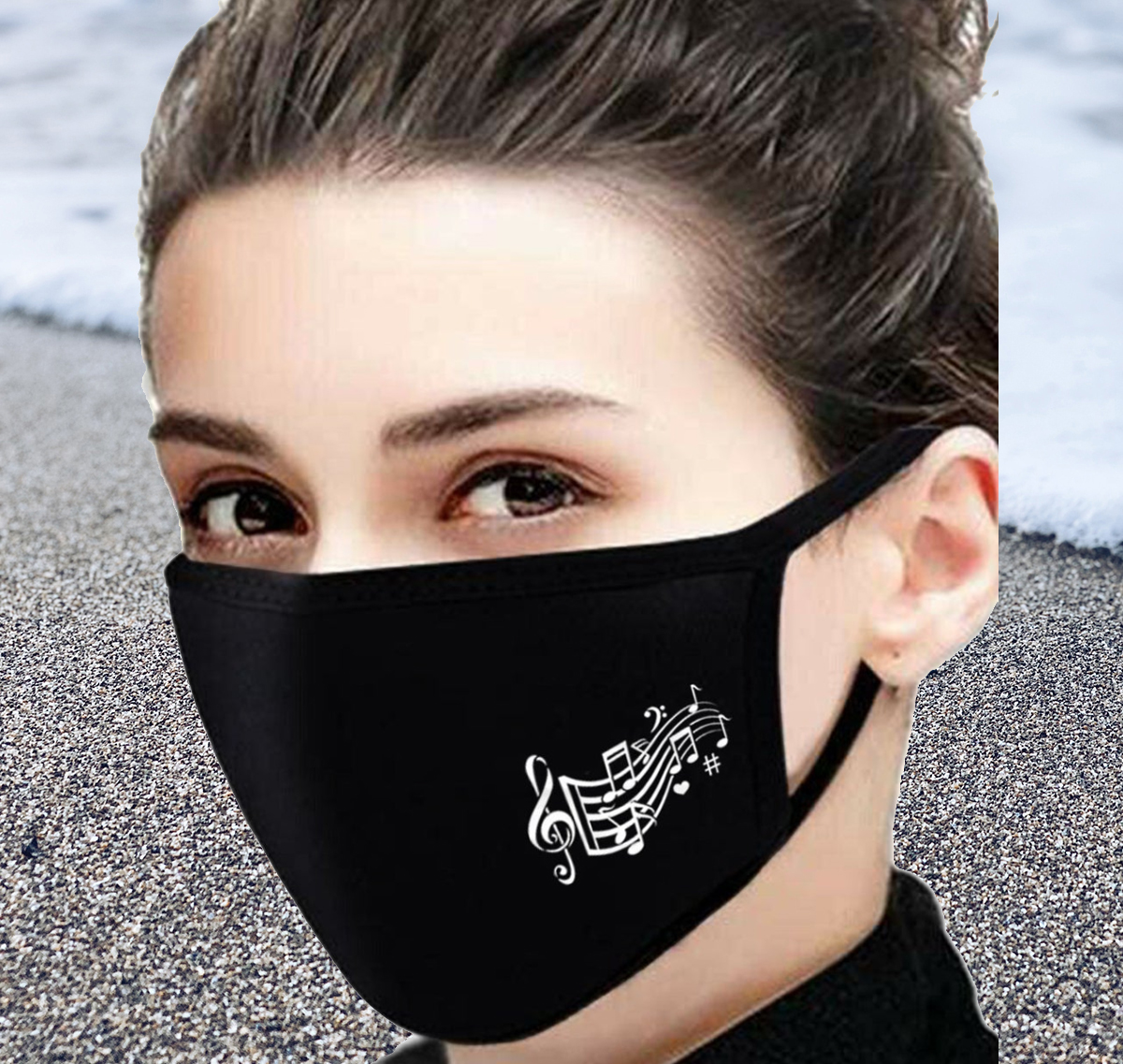 distancing, our early Coronavirus research among core radio fans clearly showed how much so many people were missing concerts and live performances. And this gap in their lives goes a long way toward explaining why concert companies like Live Nation had a banner year in 2023, and continue to rake in the cash this year.
distancing, our early Coronavirus research among core radio fans clearly showed how much so many people were missing concerts and live performances. And this gap in their lives goes a long way toward explaining why concert companies like Live Nation had a banner year in 2023, and continue to rake in the cash this year.
We didn’t just want to hear or even see music video. We wanted to experience it for ourselves.
And yet, while demand for great brand experiences may be at its highest – thanks in no small part to the reverberation from the pandemic – delivery on the promise has far been from successful. In fact, Forrester reports the customer experience is suffering among many, many brands – now at its lowest point.
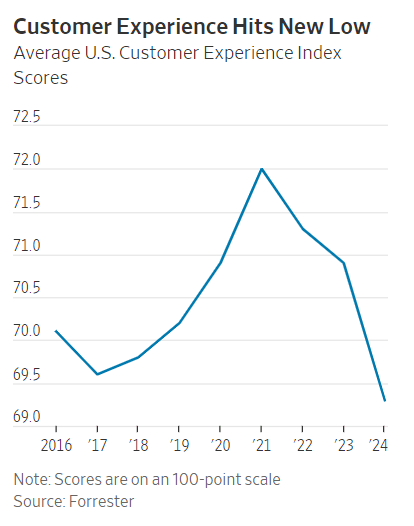
Entertainment and media companies that do their homework know this implicitly. While not measured for radio, of course, it’s not a stretch to think listeners aren’t especially enamored with the experience they’re deriving from most stations.
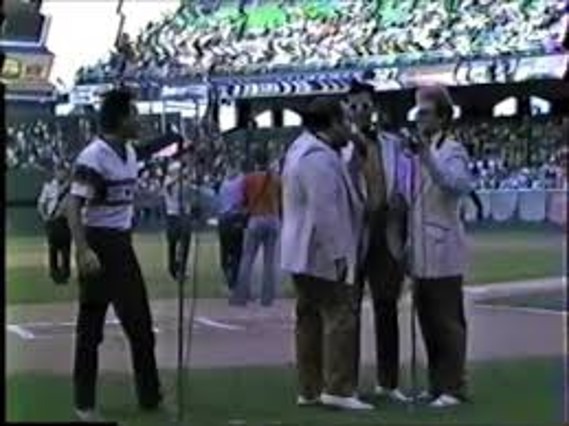
And over the years, the medium’s best shows have performed in front of live audiences, bringing the experience to local theaters, clubs, and hotel ballrooms. Alas, these showcase events that were so traditionally crowd-pleasers are more and more rarities. I think back to Chicago morning radio where megawatt morning icons like Steve Dahl and Jonathan Brandmeier took their shows to theaters, sheds, and even baseball stadiums. It was always a unique way listeners could connect with a beloved morning show.
 Give podcasters credit for rekindling interest in live, in-person interludes with talent, giving fans a chance to buy merch, and perhaps even score a selfie or an autograph with their personality heroes.
Give podcasters credit for rekindling interest in live, in-person interludes with talent, giving fans a chance to buy merch, and perhaps even score a selfie or an autograph with their personality heroes.
Some of the most popular podcasts – including the wildly successful “My Favorite Murder” – have melded touring into their business model, providing fans with a whole new level of appreciation.
Of course, this is still happening today in radio, albeit on a more limited basis. Bob & Tom have continued to take their show on the road, but in the wake of COVID and expense cutting, the resources and will necessary to pull off live broadcasts just haven’t been there for most shows. (See video at the end of this post.)
And yet, you have to wonder whether sales departments couldn’t raise rates on spots and sponsorships, in addition to selling product placement opportunities for the show itself, as well as post-packaging video treatments that end up online. For many stations and shows, however, this is unfortunately a tough putt.
That’s too bad, because the “experience” trend only seems to have intensified since the pandemic eased up. And to get an edge over the competition, more and more brands are looking for ways to provide a richer, more 360° connection for a favorite product, service, or personality. A fascinating case in point is Netflix, a company lacking personality and a distinct experience.
brands are looking for ways to provide a richer, more 360° connection for a favorite product, service, or personality. A fascinating case in point is Netflix, a company lacking personality and a distinct experience.
After all, watching a documentary on your sofa on Netflix isn’t much different than watching one on AppleTV+ or Hulu. Yes, the Netflix interface may be a bit better, but the activity itself doesn’t differ much from one streaming service to the other.
At the core, Netflix and its many competitors are all about us fans shaping our own personal viewing experiences – on our own terms, in our own media rooms, even with our own snacks. But experiences, they are not.
Until now.
Netflix recently announced the 2025 launch of their very own immersive experience, based on some of their most popular movies and shows – Netflix House. You’ll have to leave your den or rec room to witness it in person, but it’s clear the Netflix “experience team” has obviously taken good notes while attending Disney and Universal theme parks, as well as attractions like LEGOLAND, looking for clever ways to mash up the movie and game experiences with real live exhibits, rides, and experiences.
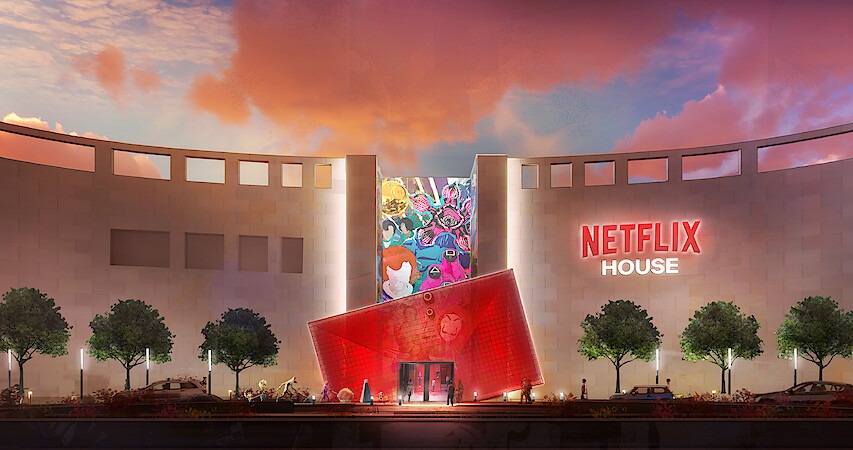
These high-concept venues will replace closed anchor department stores in two of the most popular malls in America – the Galleria in Dallas and the King of Prussia Mall outside Philly.
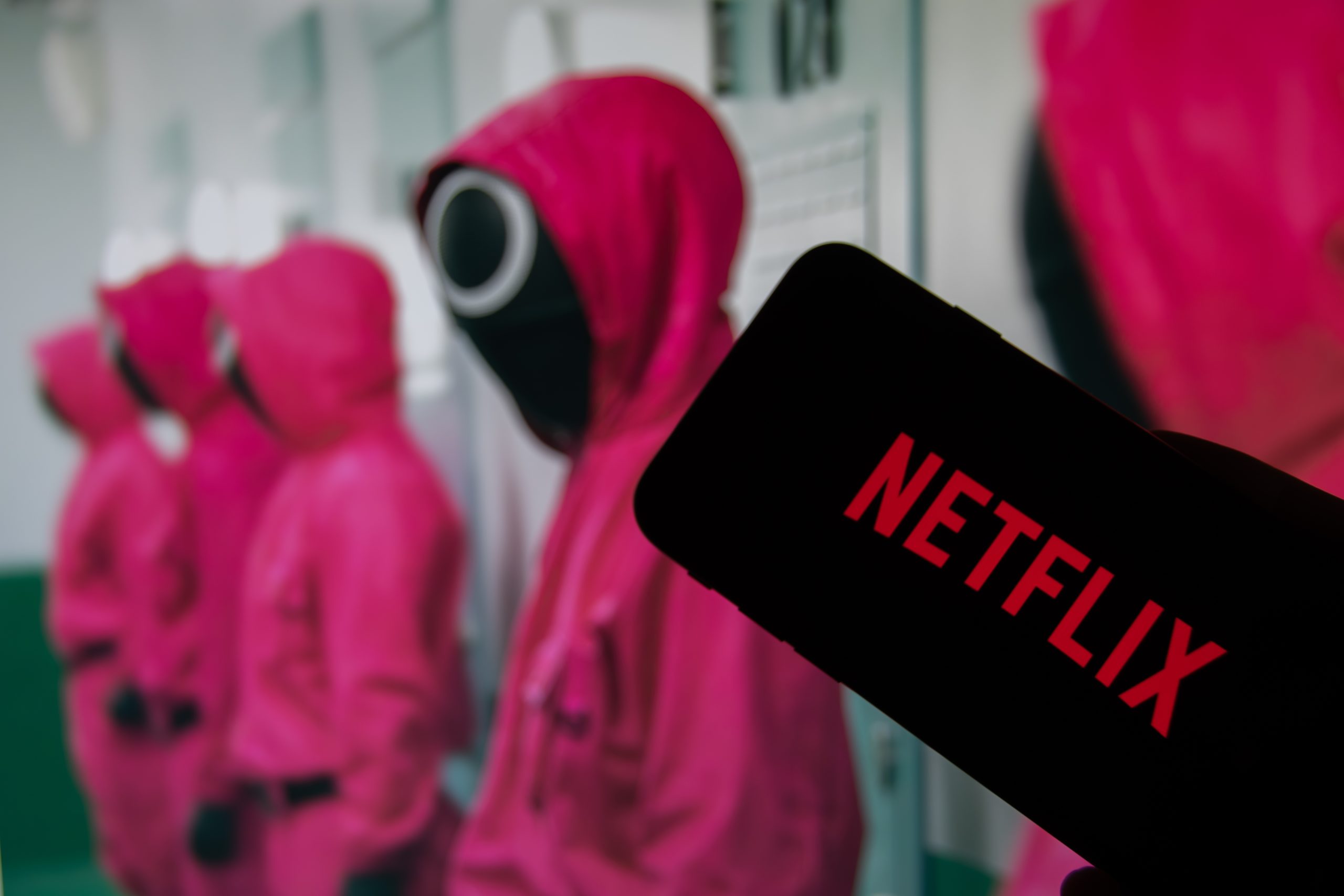 From merch to food to actual experiences, Netflix hopes to take popular video content from big hits like Squid Game (pictured), Bridgerton, Stranger Things, and many others to the mall. All told, Netflix is looking at 50 venues across 25 cities around the country – a major investment in experience-based marketing and branding.
From merch to food to actual experiences, Netflix hopes to take popular video content from big hits like Squid Game (pictured), Bridgerton, Stranger Things, and many others to the mall. All told, Netflix is looking at 50 venues across 25 cities around the country – a major investment in experience-based marketing and branding.
We’ve talked about the Netflix goal to consistently be the most popular video streaming platform. And while their $17 billion budget to create new content provides a financial advantage over their competitors, it is more than just about who’s got the best movies. Or in radio terms, who’s playing the best songs? Loyalty, as radio people well know, can be elusive.
In fact, it’s about finding a difference maker in an environment where viewers often don’t even know which platform their watching. But when you add in unique experiences, a leading brand like Netflix can help provide separation from Hulu, Disney+ and the growing list of other video streamers.
In fact, Netflix is well-positioned overall, but Nielsen reports that in May, YouTube actually was the leader in overall viewers of all ages. Netflix hopes a different way of consuming and experiencing the brand might give it an edge, especially in the word-of-mouth department.

It’s not a stretch to expect more and more one or two dimensional media brands to seek out unique ways to personally connect with their core viewers and listeners. After all, more are looking for those unique experiences, the chance to go backstage, behind the velvet ropes, and enjoy a special moment with a favorite brand or show.
MSNBC is giving this a shot in September with a live “Democracy 2024” event in Brooklyn, featuring most of its core news anchors and journalists. It will be interesting to see how the MSNBC events team makes television come alive in a very different, more personal, and interactive setting.
As attractive an idea this might be to core MSNBC fans, however, only a percentage live in the New York/New Jersey/Pennsylvania area. If you reside in the Midwest, the south, or the west, chances of being in Brooklyn in early September are remote.
This is why a local radio station or show has a distinct advantage in the experiential department because it is tethered to a specific market or community it serves. In Europe, radio stations are much more likely to lean into enhancing their home field advantage with the use of elaborate remote vehicles, allowing stations to broadcast from virtually anywhere in the vicinity. This provides greater fan access, and the chance for locals to see a favorite show, personality, or team in a positive setting.
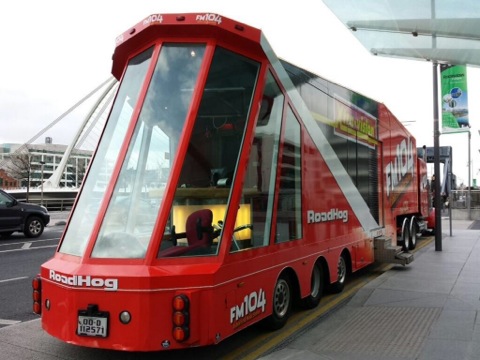
This level of creating more “eye contact” with fans is becoming a more important part of fandom. The 2023 Playbook for public radio, sponsored by SRG, PRPD, and Greater Public revealed that audience members generally want to see their favorite brands be more visible in the local community. For radio, this is a good problem to have, the chance to get in front of listeners in unique and memorable ways.
We quantified this in last year’s Public Radio Techsurvey. As we see in study after study, Millennials – in particular – are more enamored with station interaction and the opportunity to socialize with a favorite brand.
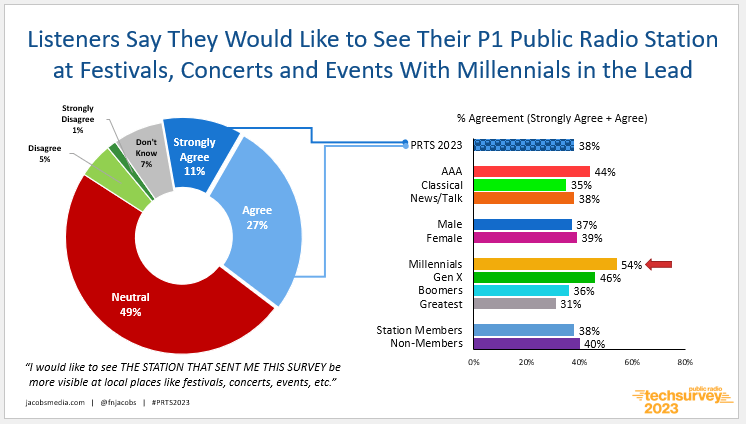
Creating in-person experiences isn’t just about building brands – it should lead to advertiser and sponsor opportunities that will help set radio stations apart when it comes to experiential marketing. It’s also a chance for a station to show the community its power to not only draw fans but to also entertain them in meaningful ways.
As opposed to selling :30s and :60s that are part of excruciatingly painful stopsets, advertisers can benefit from more unique and personal marketing efforts as a part of building brand experiences.
There’s also the benefit of word-of-mouth. You might make the case that because fewer and fewer stations are investing in local events, when one actually happens, coverage by other media players in the market is more likely.
Here’s how one of the local TV affiliates covered Bob & Tom’s recent appearance in Charleston, West Virginia:
But none of this happens spontaneously or without investment. Piling the burden of planning and pulling off event marketing onto an already overworked promotion director (assuming there is one) is a recipe for failure – or mediocrity. And there’s a lot on the line, including the audience experience and the advertiser experience. Strong events require hiring the right people and giving them the tools in which to plan, market, and execute successful market events. Why expose clients and advertisers to a random, lackluster event?
In the past, I’ve highlighted Ed Levine’s Galaxy team in upstate New York who have done “all of the above,” including creating a great track record of success, earned over years of working, to get it right for both cumers and clients. There’s a lot to be said for giving the locals something to do, especially in cities and towns known more for their snowfall than for their entertainment venues.
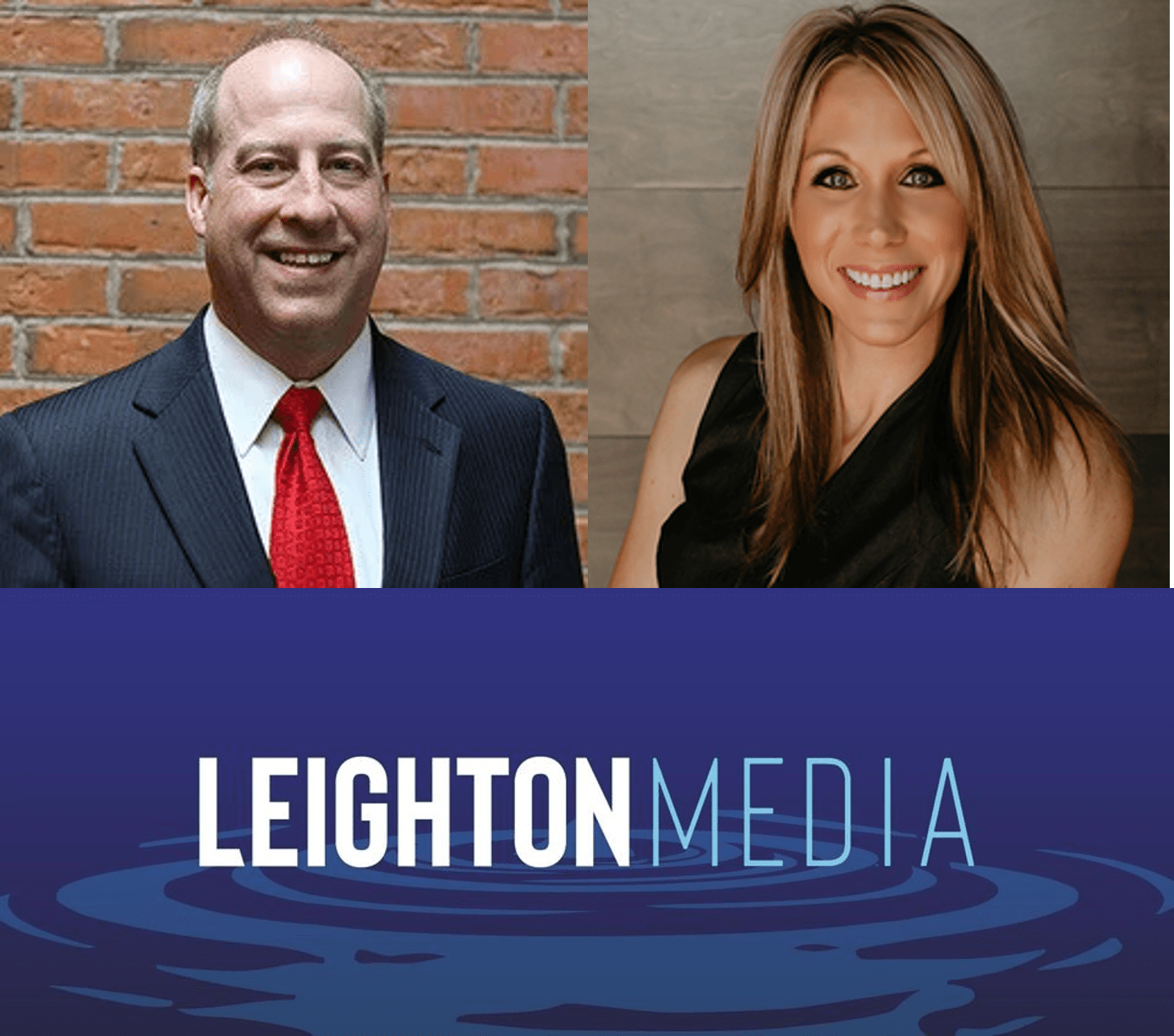 And then there’s Leighton Media, a group comprised of smaller stations in the northern Minnesota neck of the woods, continuing to impress with a fully staffed events department. Leighton Events is the brainchild of owner Bob Leighton and COO Stephanie Theisen (pictured), and it is made up of signature gatherings that work across their portfolio of markets.
And then there’s Leighton Media, a group comprised of smaller stations in the northern Minnesota neck of the woods, continuing to impress with a fully staffed events department. Leighton Events is the brainchild of owner Bob Leighton and COO Stephanie Theisen (pictured), and it is made up of signature gatherings that work across their portfolio of markets.
The department is led by Cole Erie and his team, Tara Trout and Trevor Waltzing, working together on successful and scalable events in all the cities and towns they serve. Frequently competing against the biggest companies in radio, Leighton stands out for its ability to pull off major events where most others don’t bother.
In smaller towns, of course, there’s is simply less for the locals to do, so a well-orchestrated event or festival has a better chance of success. But no matter the population size, events require planning, teamwork, and execution if they’re going to provide sustainable results.
Currently, the Leighton team has created events around craft beer, seniors, wine, holidays, and other reasons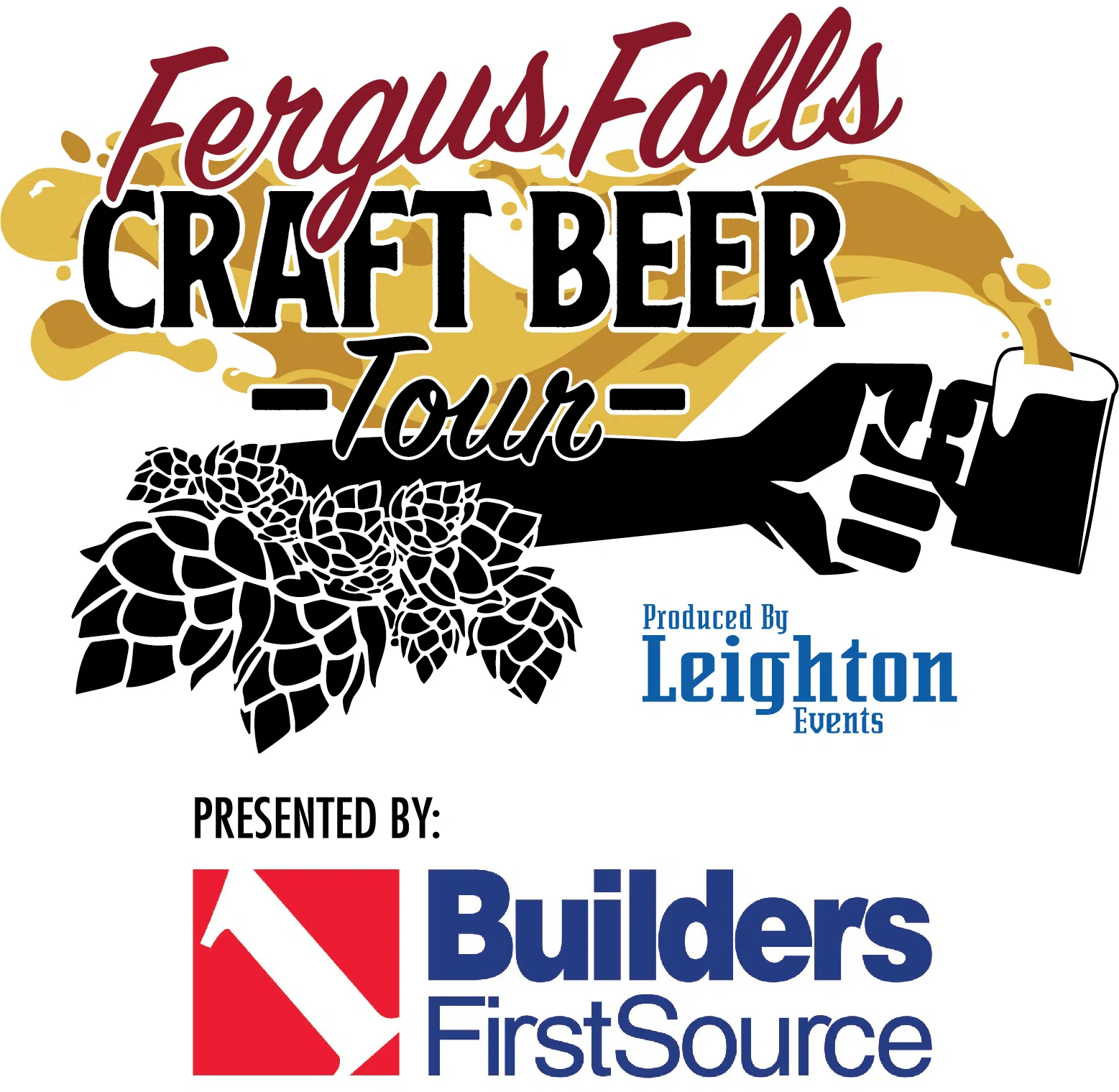 ripe for hometown success. These experiences are wisely conceived, well-prepped events that generate sustainable income.
ripe for hometown success. These experiences are wisely conceived, well-prepped events that generate sustainable income.
The history of radio over the past several decades is filled with signature events that have set stations apart. I think of iconic large-scale gathering like the HFStival and KBCO’s Kinetics as great examples of radio’s ability to create large-scale events that are repeatable for years or even decades.
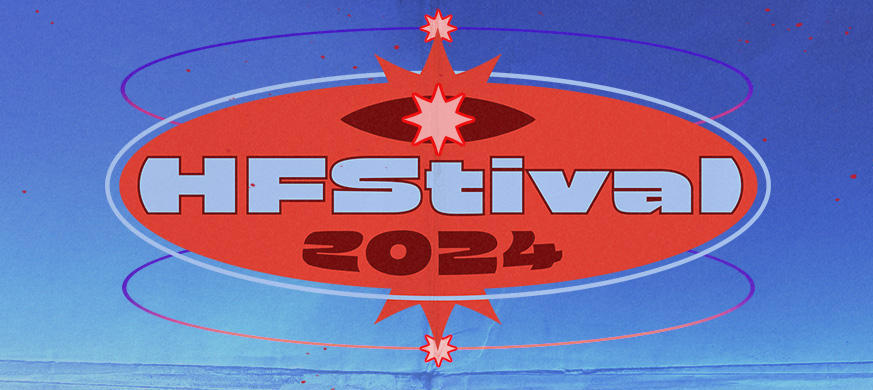 The HFStival is back in the nation’s capitol in September for the first time in a long time. Ironically, the event is being done without WHFS (which no longer exists) or any radio station for the matter.
The HFStival is back in the nation’s capitol in September for the first time in a long time. Ironically, the event is being done without WHFS (which no longer exists) or any radio station for the matter.
Sometimes it happens that a station event can actually overshadow or dominate a station brand. For a number of years, Paul was on the team at the legendary KZEW in Dallas where the famous “Zoo World” became bigger than the radio station, ultimately setting the brand back.
As AI grows in importance, experiences will continue to be high priority entertainment choices for many consumers looking for the next big thing. As we saw at Sphere in Las Vegas this past January at CES 2024, the public’s appetite to be blown away by media, technology, sight, and sound appears to be insatiable.
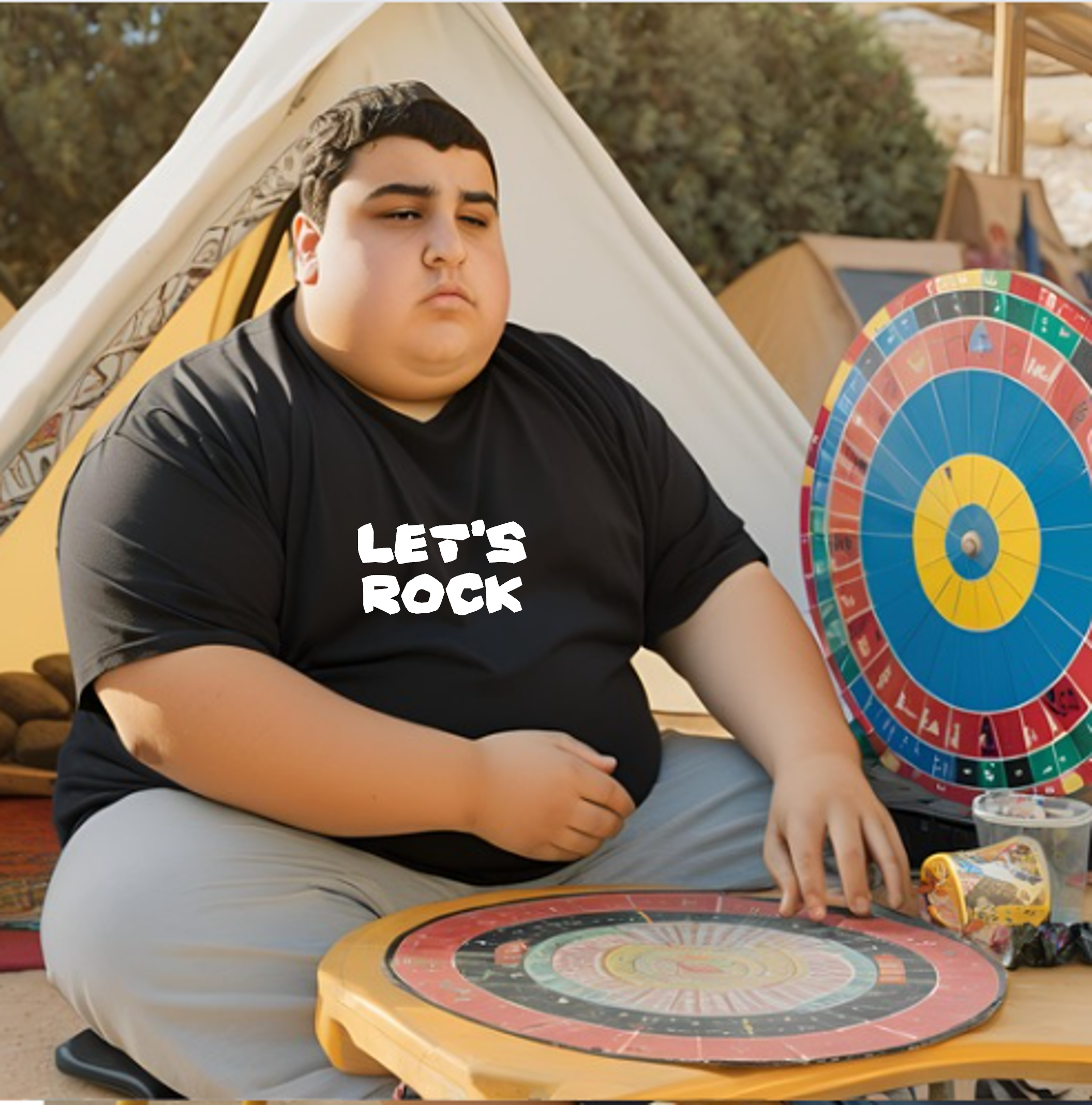
The bar’s been raised, and for radio stations trying to not go over budget, there’s even more pressure when everybody’s looking. Even at local market events where several radio stations are present, there is a need to do more than simply put up the tent, open up the card table, apply a couple drops of WD-40 on the prize wheel, and plop a bored intern into a chair.
Consumers want to be blown away when a brand shows up, not disappointed by a poor, lackluster showing where it’s obvious no one really cares. Rather than showing up looking like an also-ran, radio stations might want to rethink their event presence in a more judgmental world.
That is, if you’re going to just mail it in, maybe think about staying home. In 2024, brands are upping their games.
Maybe setting guitars on fire wasn’t such a bad idea after all. It certainly created a memorable experience. Jimi Hendrix even got a bobblehead out of the deal. 
- Lessons For Radio From The Recent Google Home Outage - May 19, 2025
- The Rock Hall’s Most Egregious Snub Yet? - May 16, 2025
- Attention Tech And Entertainment Writers: Don’t Mess With Radio! - May 15, 2025




Leave a Reply